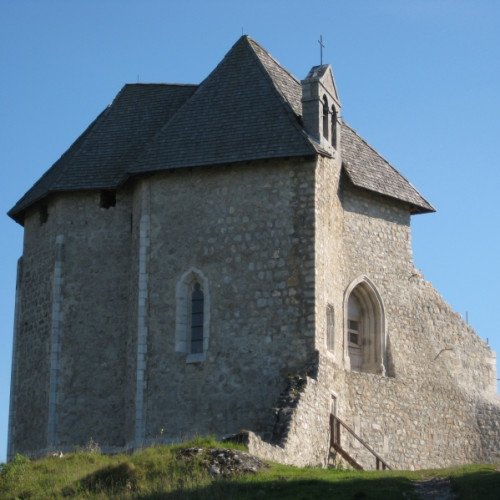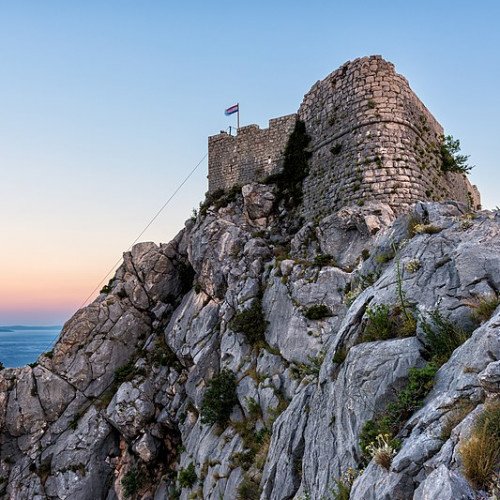Castles of "Croatia" SOKOLAC CASTLE vs STARIGRAD FORTRESS

SOKOLAC CASTLE
Sokolac Castle (Croatian: Gradina Sokolac) is a castle in Brinje, Croatia. It is named after the Croatian word for hawk (sokol), which appears on the town's coat of arms. It dates back to medieval times, while the town was held by the noble Frankopan and Gorjanski families. The castle was part of an important medieval fortified city held by Frankopan family. Sokolac Castle was an extremely grand building, dominated by the powerful perpendiculars of the entry tower, and the Chapel of the Holy Trinity. The entry into the burg was through a square, three-storey tower, the façades of which were relieved with lesenes linked at the top with blind arcades, making it a unique specimen in the whole of Central Europe.
Statistics for this Xoptio

STARIGRAD FORTRESS
Starigrad Fortress is a 15th-century fortress located near Omiš in Split-Dalmatia county, in Dalmatia, Croatia. The fortress or Fortica was built during the Croatian–Ottoman wars as a primary defence against the Ottoman Empire. The precipitous fortification is sited on a 262 m (860 ft) ridge above the town Omiš. In the event of attack, its purpose was to provide refuge for local people and be a stronghold where they could retreat to and resist the Turks. As the stone fort's defensive strength is derived from the elevation at which it was built, it is a rudimentary defensive structure. A two-storey square tower stands at its highest point, serving as both a lookout post and keep. A simple bastion stands at the opposite end of the fort to cover the approach path and the ridge line. It has an outer barbican to defend the fort's narrow entrance gateway and the gorge below the fort. The walls, which are about 1 m (3 ft 3 in) thick, are made from locally quarried limestone. They enclose an inner bailey that is separated into two distinct levels by the difference in the site's natural rock height. Access between the levels is via a small stone stairway that was once protected by a stone wall and gateway. In event of attack, the fortification's design permits the defenders to fall back to higher ground as each level falls.